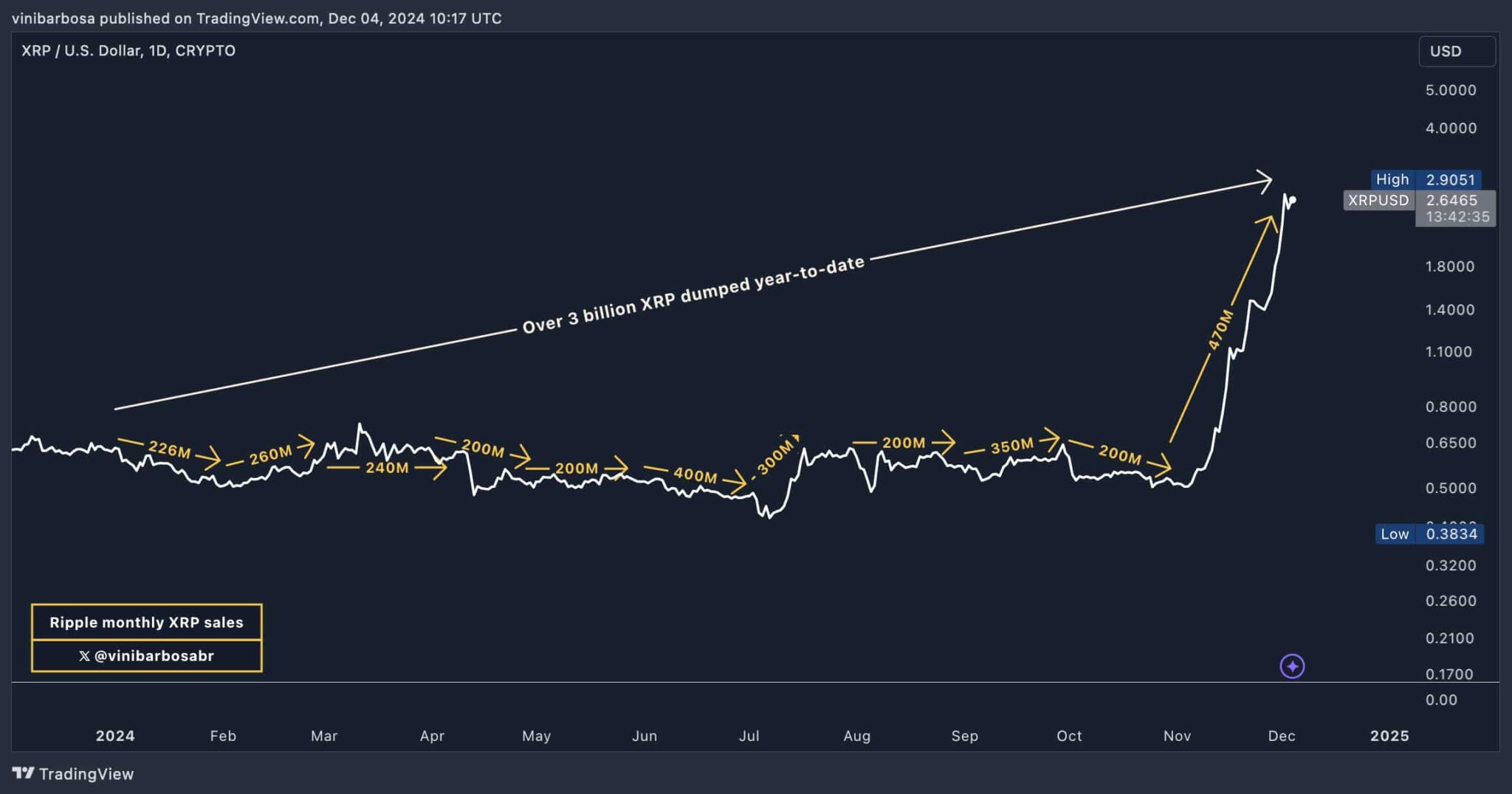After preparing its largest monthly dump to date in November, Ripple is back to its usual selling activities in December. On Sunday evening, the company reserved 200 million XRP from this month’s 1 billion unlock, ready to offload.
As Finbold reported, Ripple unlocked December’s tokens in three escrows from two known XRP accounts under the company’s control. Ripple (24) unlocked 200 million and 300 million XRP, sending the lower amount to Ripple (1), the company’s treasury account.
Then, Ripple (24) sent the 300 million tokens to Ripple (12), locking it in another escrow with finality for 2028. Meanwhile, Ripple (25) unlocked 500 million XRP in a single escrow and similarly relocked it all with Ripple (13).
How much of XRP will Ripple sell in December 2024?
So far, Ripple has signaled an intention to sell the 200 million XRP reserved at Ripple (1), worth $528 million.
While this month’s reserve is not the highest in XRP tokens count, it will be Ripple’s largest sell in USD value – even larger than November’s 470 million XRP dump, which started at an average of $0.55 per token, totaling $258 million.
In total, Ripple has already offloaded over 3 billion XRP year-to-date and is about to close 2024 with massive profits. Interestingly, only four out of eleven months had a 200 million XRP sale. The company added more tokens from its controlled accounts in all other months, which could happen again in December.

While the company did not disclose each sale separately, Ripple has already disclosed its selling model on many occasions. According to sources, its XRP sales go through an On-Demand Liquidity (ODL) model, selling at market price to willing customers.
Nevertheless, even this model requires an upcoming demand and dilutes exchanges’ order books by absorbing most of this XRP buying pressure.
XRP investors can monitor Ripple’s accounts to be aware of potential sales and unlocks that can dilute their holdings. Every time the company unlocks tokens from escrows, it inflates XRP’s circulating supply, requiring a proportional demand increase.
Featured image from Shutterstock.

